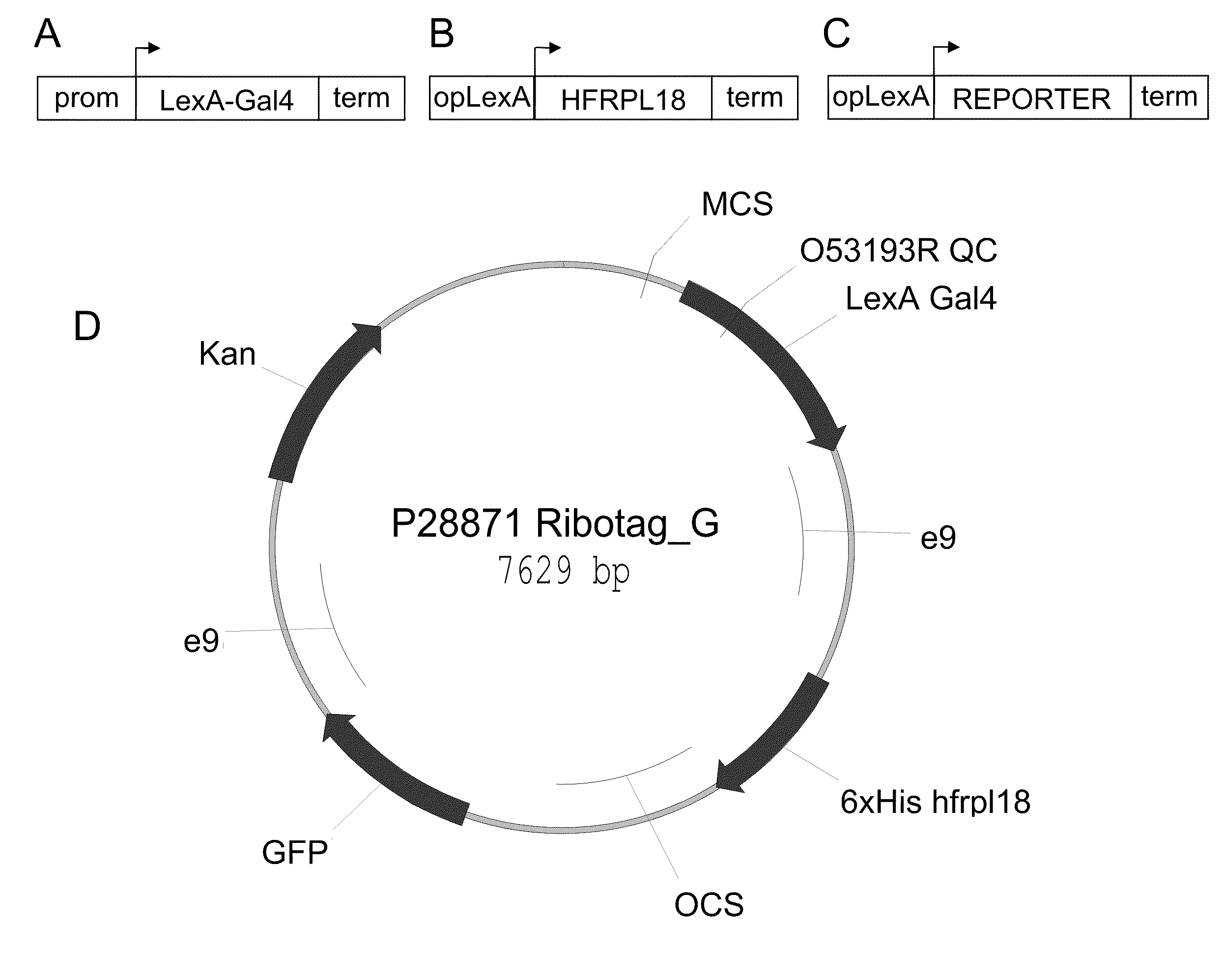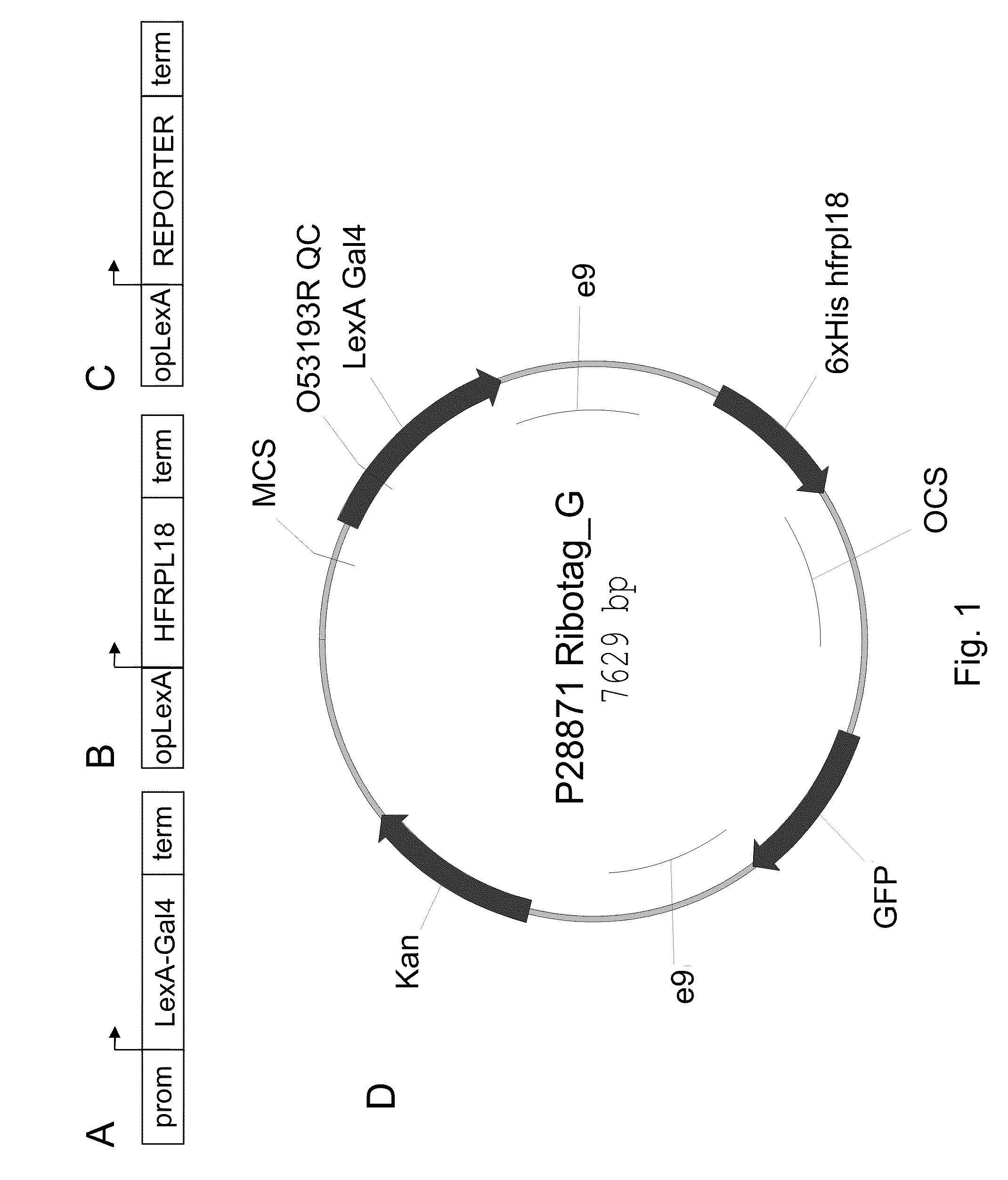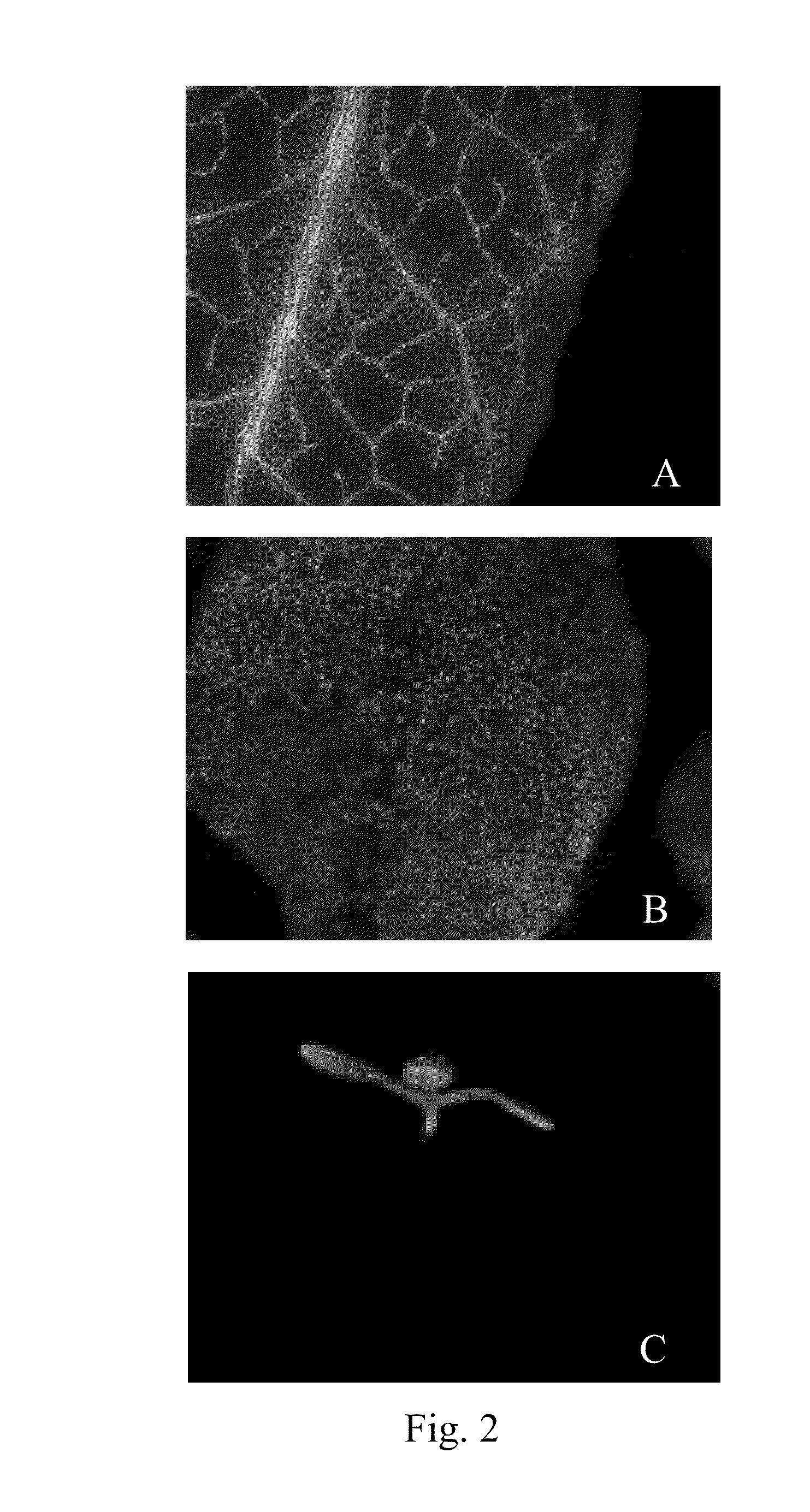Polysome-mediated cell type-, tissue type- or condition-enhanced transcript profiling
a polysome and transcript technology, applied in the field of plant genomics and plant improvement, and systems biology, can solve the problems of invariably disrupting or changing the basic multicellular nature of the organism, only fully understanding the biology at the organismal level, and being extremely laborious
- Summary
- Abstract
- Description
- Claims
- Application Information
AI Technical Summary
Benefits of technology
Problems solved by technology
Method used
Image
Examples
examples
[0075]It is to be understood that this invention is not limited to the particular devices, machines, materials and methods described. Although particular embodiments are described, equivalent embodiments may be used to practice the invention.
[0076]The invention, now being generally described, will be more readily understood by reference to the following examples, which are included merely for purposes of illustration of certain aspects and embodiments of the present invention and are not intended to limit the invention. It will be recognized by one of skill in the art that a polypeptide that is associated with a particular first trait may also be associated with at least one other, unrelated and inherent second trait which was not predicted by the first trait.
example i
Generation of Constructs and Cloning Information
[0077]Plants containing a “multi-component 3-way” RiboTag vector (e.g., SEQ ID NO: 1) were generated. The correct and desired expression pattern was identified for multiple promoters, including the constitutive 35S (SEQ ID NO: 17), green tissue RBCS1A (SEQ ID NO: 10), vascular SUC2 (SEQ ID NO: 9), and stomate G682 (SEQ ID NO: 18). Other cell-type specific promoters could also be used, such as the meristematic STM1 (SEQ ID NO: 11), WUSCHEL (SEQ ID NO: 20), and CLAVATA3 (SEQ ID NO: 21), root specific SCR1 (SEQ ID NO: 12), root specific SHR1 (SEQ ID NO: 13), dividing tissue CYCD3 (SEQ ID NO: 14), floral meristem AP1 (SEQ ID NO: 15), APETALA3 (SEQ ID NO 22), PISTILLATA (SEQ ID NO 23), epidermal CUT1 (SEQ ID NO: 16), or a variety of other promoters driving desired expression patterns (such as in a cell-enhanced, tissue-enhanced, or condition-enhanced expression pattern).
[0078]Also of interest in the present invention is light-mediated regul...
example ii
Transformation of Agrobacterium with the Expression Vector
[0080]After the expression constructs were generated, the constructs were used to transform Agrobacterium tumefaciens cells expressing the gene products. The stock of Agrobacterium tumefaciens cells for transformation were made as described by Nagel et al. (1990) FEMS Microbiol Letts. 67: 325-328. Agrobacterium strain ABI was grown in 250 ml LB medium (Sigma) overnight at 28° C. with shaking until an absorbance over 1 cm at 600 nm (A600) of 0.5-1.0 was reached. Cells were harvested by centrifugation at 4,000×g for 15 min at 4° C. Cells were then resuspended in 250 μl chilled buffer (1 mM HEPES, pH adjusted to 7.0 with KOH). Cells were centrifuged again as described above and resuspended in 125 μl chilled buffer. Cells were then centrifuged and resuspended two more times in the same HEPES buffer as described above at a volume of 100 μl and 750 μl, respectively. Resuspended cells were then distributed into 40 μl aliquots, quick...
PUM
| Property | Measurement | Unit |
|---|---|---|
| Fluorescence | aaaaa | aaaaa |
Abstract
Description
Claims
Application Information
 Login to View More
Login to View More - R&D
- Intellectual Property
- Life Sciences
- Materials
- Tech Scout
- Unparalleled Data Quality
- Higher Quality Content
- 60% Fewer Hallucinations
Browse by: Latest US Patents, China's latest patents, Technical Efficacy Thesaurus, Application Domain, Technology Topic, Popular Technical Reports.
© 2025 PatSnap. All rights reserved.Legal|Privacy policy|Modern Slavery Act Transparency Statement|Sitemap|About US| Contact US: help@patsnap.com



